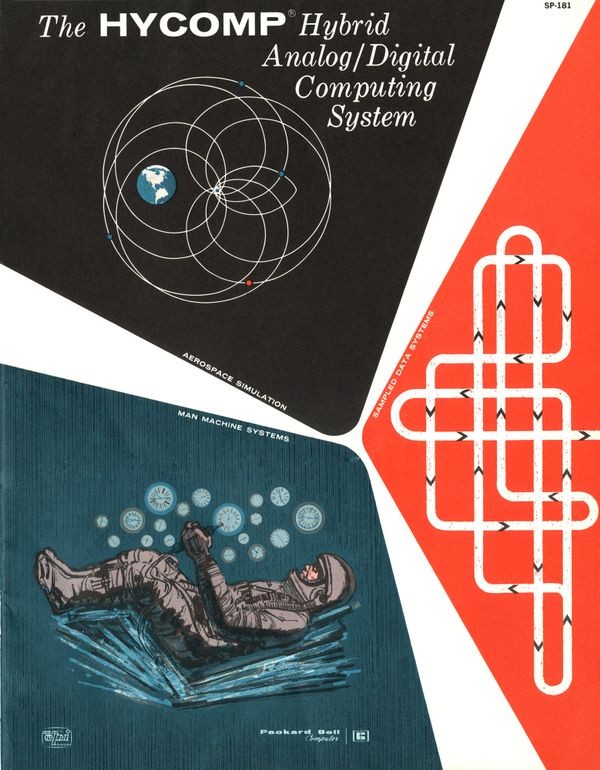The Best of Both Worlds: Hybrid Computing
Hybrid Computing at Lockheed
Lockheed Missile and Space needed to upgrade its hybrid analog computers in 1966. Market leader EAI offered an inexpensive solution. IBM suggested an all-digital approach. Lockheed decided to use the supercomputer-derived CDC 6400 with four large Comcor Ci-5000 analog computers.
The Best of Both Worlds
Analog and digital computers each offered unique advantages. So the best choice, often, was to use both.
As early as 1954, scientists coupled large digital computers with analog machines. By the late 1950s, many experts saw hybrids as the future of computing. However, as digital computers grew faster, they used software simulation to replicate the advantages of analog. Simulation software remains widespread.
EAI 640 hybrid computing system brochure
Hybrid computing became complex and sophisticated. EAI and other vendors offered software packages that helped set up both the analog and the digital sides.
View Artifact DetailHybrid Computing
Good executives delegate, assigning different tasks to different employees depending on their strengths. Hybrid computing did likewise, delegating different tasks to analog and digital components.
In the 1950s, Ramo-Wooldridge and Convair coupled digital UNIVAC and IBM machines with analog systems for missile guidance simulation. Most analog manufacturers introduced hybrids by the 1960s, generally assigning calculation of things that vary over time to analog, and logical decision-making based on calculations to digital.
As digital machines became faster, simulation languages gradually replaced analog, ending the hybrid era.
Marketing brochures run the gamut from informational to artistic, from tacky to sublime. Hybrid computing is no exception.


























